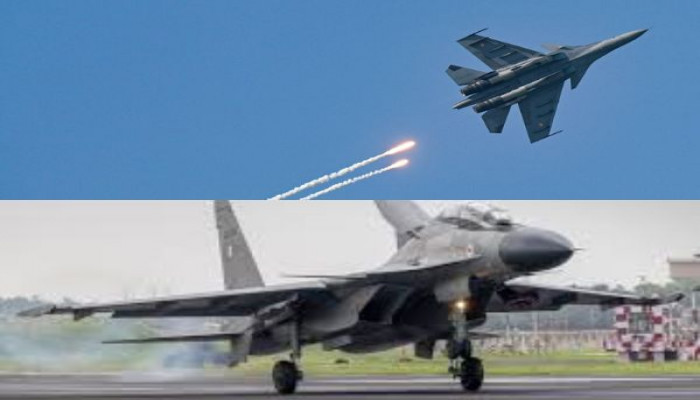Indian Air Force set to modernise Su-30MKI fleet with ‘Super Sukhoi’ upgrade
- In Reports
- 07:05 PM, Oct 04, 2025
- Myind Staff
About 75% of the Indian Air Force’s Sukhoi Su-30MKI fleet, roughly 200 out of 272 aircraft, is set to undergo a major modernisation under the ambitious ‘Super Sukhoi’ program, the IAF Chief confirmed.
This initiative marks one of the largest mid-life upgrades for frontline fighters in the IAF since the Su-30MKI first entered service in the early 2000s.
The announcement came at a press meet on October 3 at Air Headquarters in New Delhi, on the eve of Air Force Day. Air Chief Marshal Amar Preet Singh spoke about the IAF’s readiness, ongoing squadron shortages, fighter acquisitions, and the integration of unmanned systems, but the highlight was the detailed confirmation of the long-awaited Su-30MKI upgrade.
The Super Sukhoi program will see a complete revamp of the aircraft’s avionics, cockpit systems, radar, and electronic warfare capabilities. The current Indian-Russian hybrid systems will be replaced or enhanced with next-generation Indian and imported technology. Pilots will benefit from wider cockpit displays, advanced mission computers, and improved communication and navigation systems, bringing the Su-30MKI closer to the standards of modern 4.5-generation fighters.
A key part of the upgrade is the UTTAM AESA radar, which will likely replace the existing N011M Bars radar. This new radar will improve detection range, track multiple targets, resist jamming, and allow the fighter to counter stealthier threats while working seamlessly with Indian-developed missiles.
Cockpit ergonomics will also see major improvements with wider multifunction displays and enhanced situational awareness tools for pilots.
The electronic warfare capabilities will be upgraded with advanced jamming equipment, countermeasure pods, and better sensor integration. Survivability in combat will improve through radar warning receivers, missile approach warning systems, and advanced chaff and flare dispensers, ensuring the aircraft can operate safely in high-threat airspaces.
Perhaps the most notable change will be in the weapons systems. The Su-30MKI will become a primary launch platform for India’s long-range BrahMos cruise missiles and will carry newer indigenous missiles like the Astra MK-II and MK-III Beyond Visual Range Air-to-Air Missiles. Discussions are ongoing about including high-speed precision stand-off weapons and next-generation glide bombs.
With these upgrades, the Su-30MKI fleet will remain the backbone of the IAF well into the 2030s. The aircraft will evolve from a heavy multirole fighter to a networked combat platform capable of operating alongside Rafale jets and future indigenous fighters like the Tejas MK-2 and AMCA.
The program also highlights India’s ‘Make in India’ initiative. Hindustan Aeronautics Limited and DRDO will play central roles in system integration, radar development, and electronic warfare architecture. A significant portion of the work will be indigenised, reducing reliance on Russian suppliers and strengthening India’s strategic autonomy.







Comments